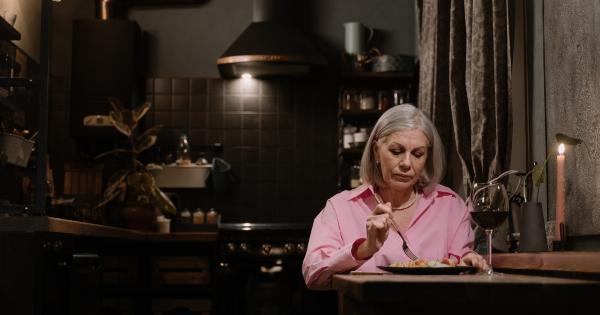Dining in the dark is a unique culinary experience where patrons are served their meals in complete darkness. The idea behind this dining experience is to enhance the senses, primarily taste, since eating without seeing heightens the other senses.
However, dining in the dark is not entirely safe and may pose certain dangers to individuals. In this article, we will discuss the risks involved in dining in the dark and why caution should be taken.
1. Food Allergies and Intolerances
Food allergies and intolerances affect millions of people worldwide. When dining in the dark, it is difficult for servers to keep track of every patron’s dietary restrictions.
People with food allergies or intolerances need to know exactly what they are eating to avoid adverse reactions. Dining in the dark does not allow for this level of control, leading to unnecessary risks.
2. Risk of Choking
Eating in the dark limits your ability to see what you are eating. This is particularly dangerous when it comes to food that has bones or is tough to chew.
Eating without knowing what you are consuming can increase your risk of choking, especially if you are not accustomed to eating in this condition. Accidents can happen, and even minor incidents can result in significant risks to your health.
3. Increased Risk of Food Poisoning
Dining in the dark increases the possibility of cross-contamination. The food cannot be seen, so it is more challenging to assess whether the food has been safely prepared or handled correctly.
This raises the risk for food poisoning, especially when it comes to food that is high in bacteria or other harmful elements.
4. Risk of Injury and Accidents
Although dining in the dark focuses on heightening the senses, it limits sight, which is essential for our sense of balance.
Without proper light, there is an increased risk of accidents and injuries that could be caused by obstacles like stairs, tables, chairs, or dropped utensils. Furthermore, the lack of light can cause patrons to spill drinks or hot food on themselves, leading to burns or other injuries.
5. Anxiety and Fear
Silence and darkness can cause anxiety and fear in some people. The subconscious fears about what they cannot see or hear can translate into actual physical and mental distress.
Dining in the dark may not be the best option for people who suffer from anxiety or panic attacks or who have had traumatic experiences with darkness in the past.
6. Lack of Accessibility
Dining in the dark is not accessible to everyone, as it primarily relies on the visual sense. People with blindness or low vision cannot perceive the enhanced culinary experience that dining in the dark offers.
Additionally, people with mobility issues might find it challenging to navigate in a dark room since there may be unexpected obstacles like stairs or uneven surfaces.
7. Distraction and Disorientation
Eating in the dark can be a significant distraction, as patrons may struggle to identify the food they are eating.
This can create confusion and disorientation, disrupting the flow of conversation and making it challenging to enjoy the gastronomic experience. Additionally, other senses like hearing or touch may be overwhelmed, making it difficult to have a relaxed, pleasant sensory experience.
8. Unsafe Environment during Emergencies
The lack of light in a dining-in-the-dark experience may pose a serious problem in case of an emergency. People will not be able to see the exit, which could make it challenging to evacuate the area safely.
This can put everyone present in the dining area at risk, especially if there is a fire or another emergency that requires them to leave the building quickly.
9. Cost
Dining in the dark tends to be a more costly experience compared to eating in a regular restaurant. Dining in the dark involves extra preparation and staffing, which increases the overall cost for the patrons.
In some cases, the price may not be worth the risk, and there is a higher chance of getting only a novelty experience rather than a culinary one.
10. Ethical Concerns
Some people may feel uncomfortable with the idea of dining in the dark, as it can give the impression of exploiting people’s disabilities, rather than appreciating them.
The core idea behind dining in the dark is to help the sighted become more aware of how they perceive the world, but it may cause discomfort in those who feel that this experience is a caricature of their reality.
Conclusion
Dining in the dark may be an exciting experience for some people, but it is important to consider the risks involved before trying it.
From food allergies and intolerances to an increased risk of accidents and injuries, dining in the dark is not entirely without danger. If you do decide to try it, do your research to ensure that the restaurant is safe, reputable, and follows all local safety regulations.
And, most importantly, listen to your body and your instincts: if you feel uncomfortable, speak up and opt-out of the experience.































